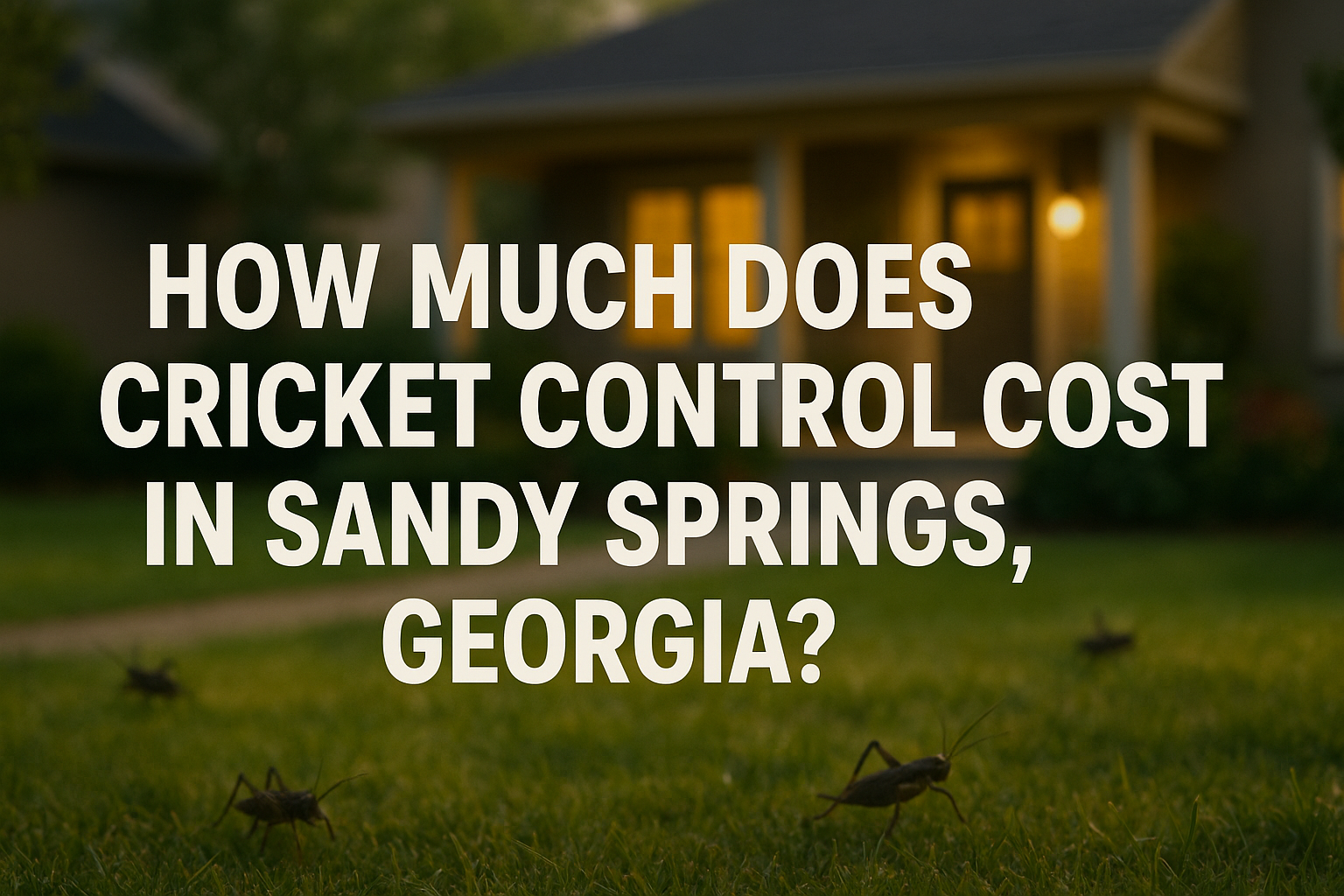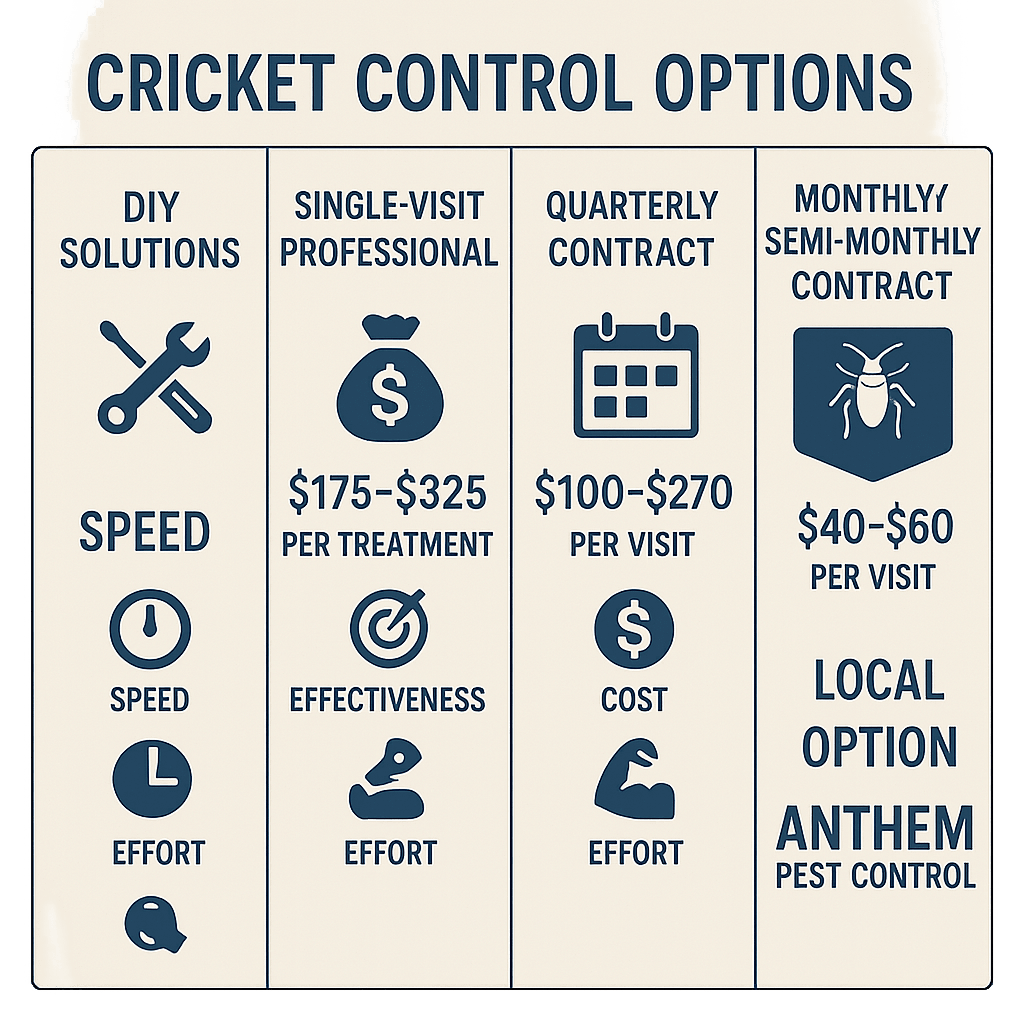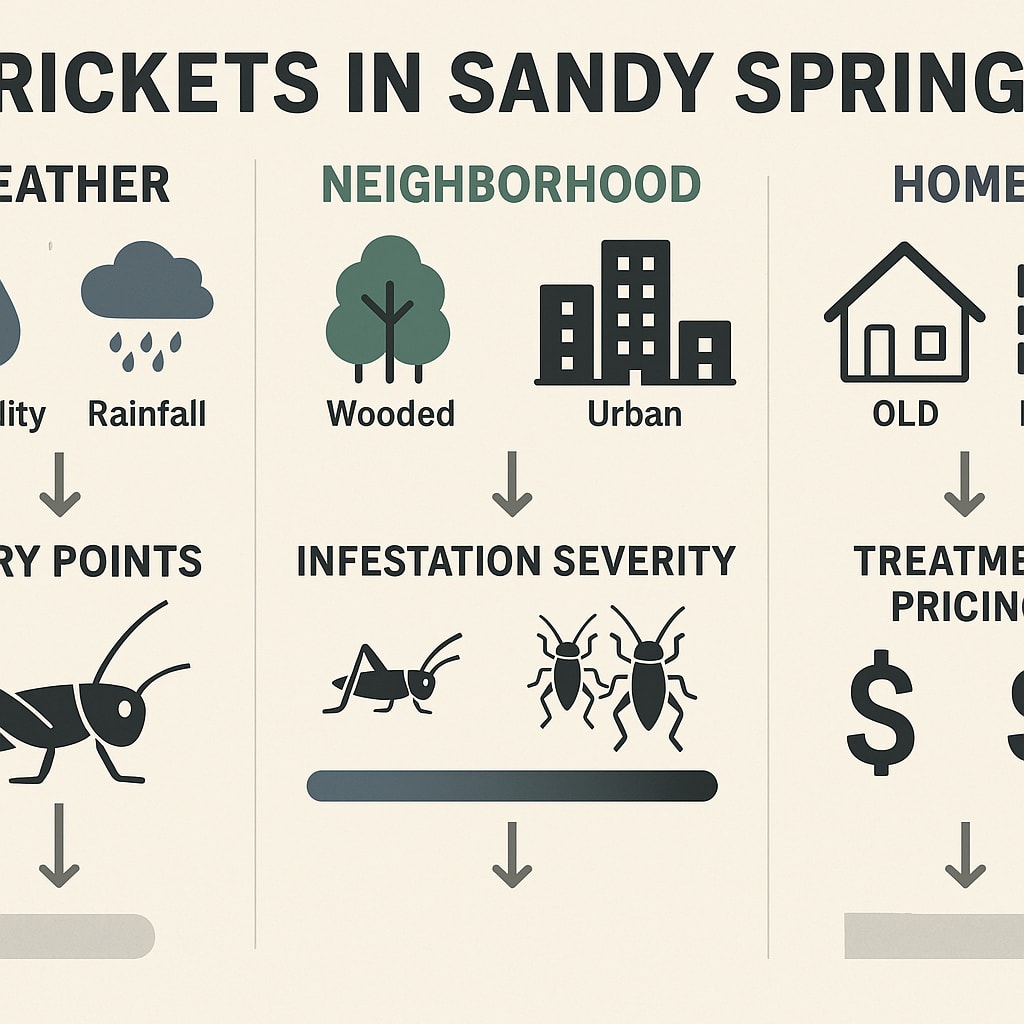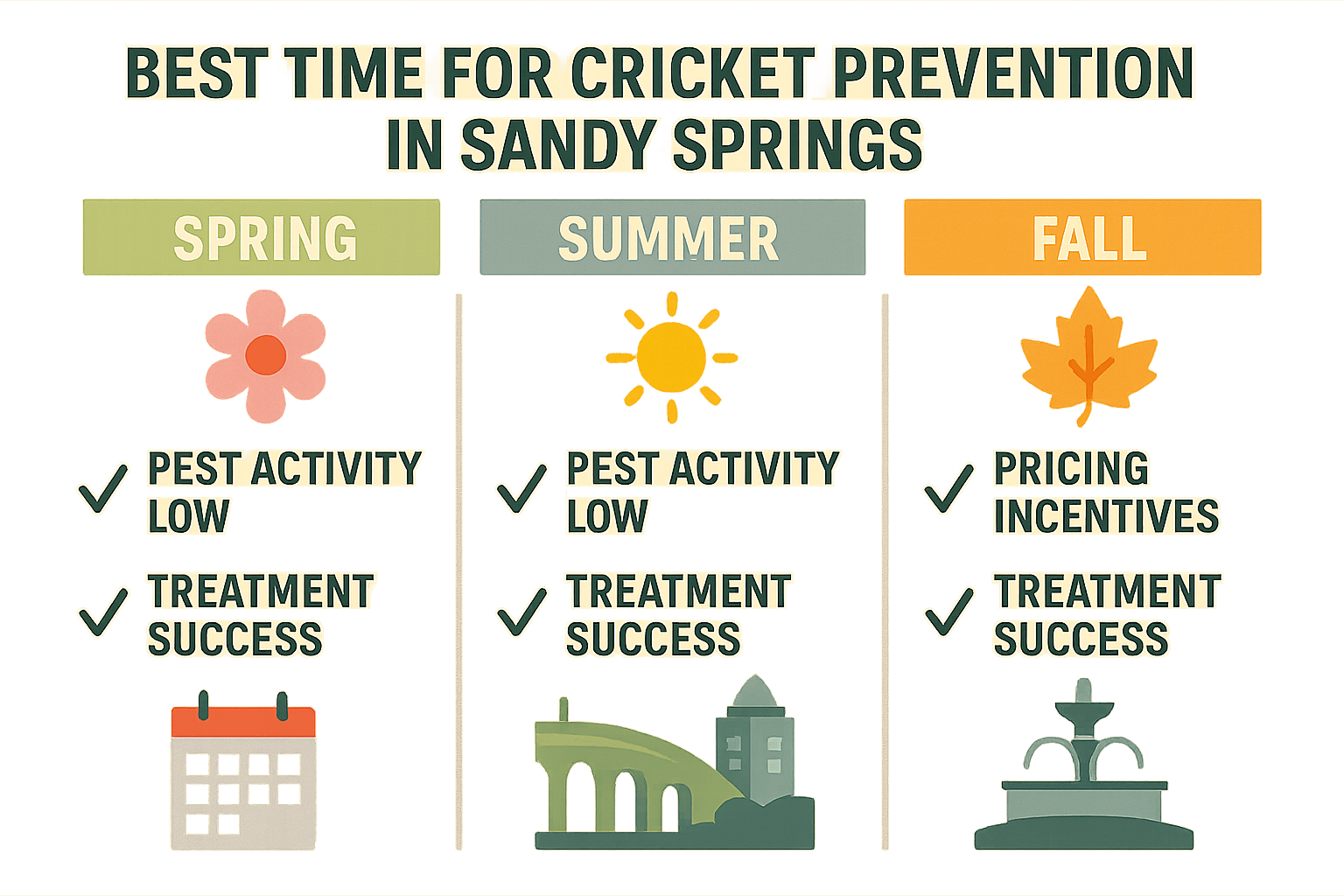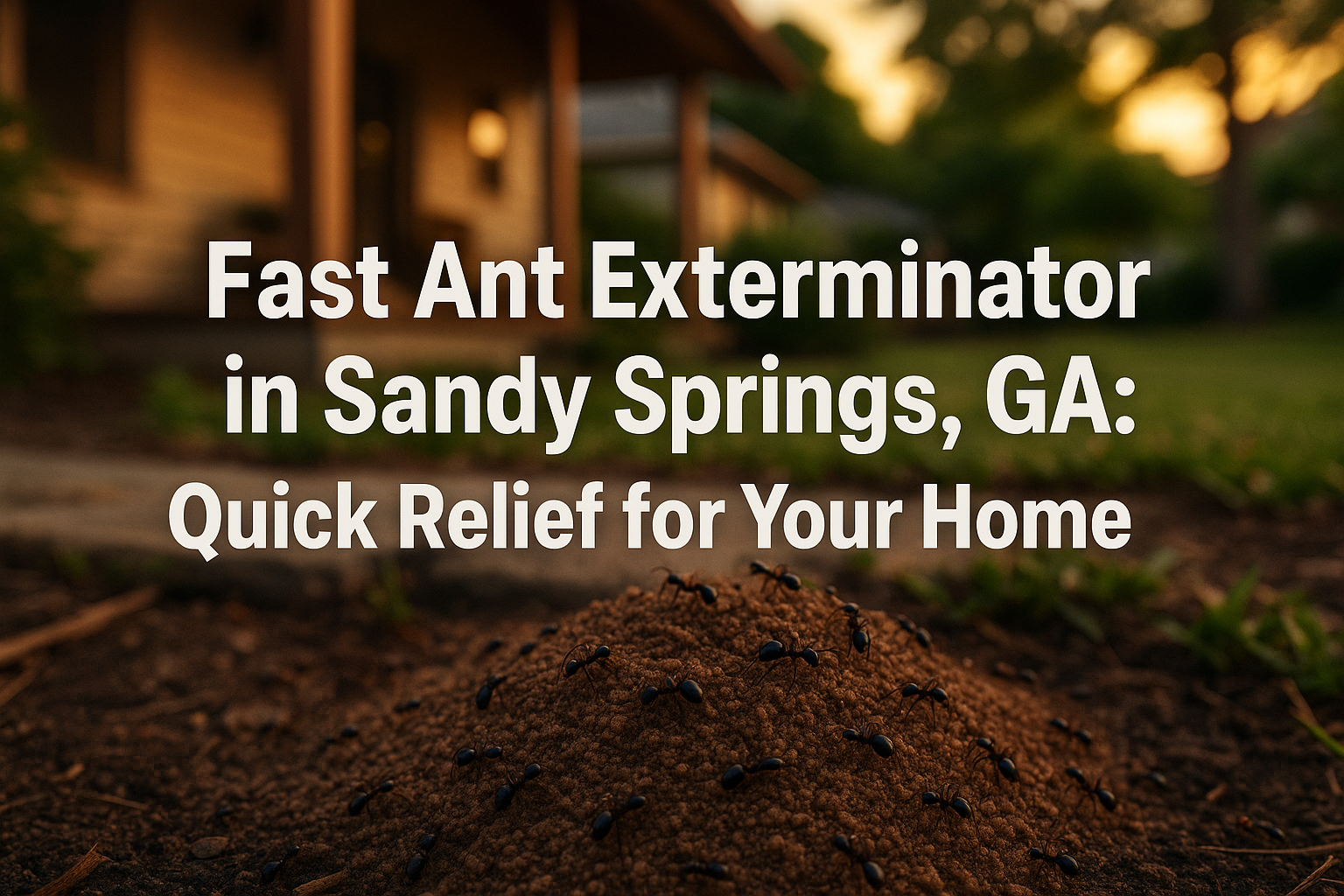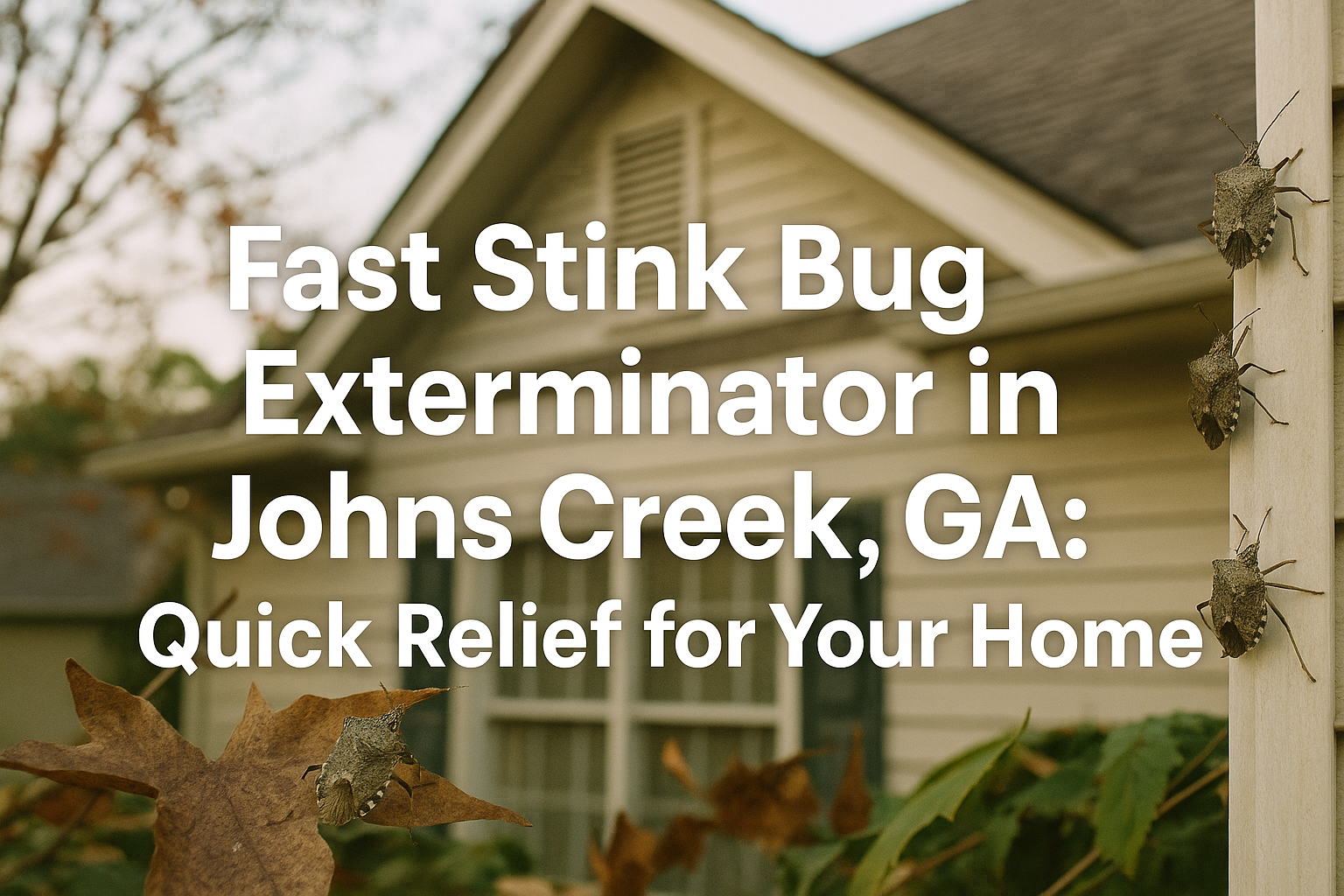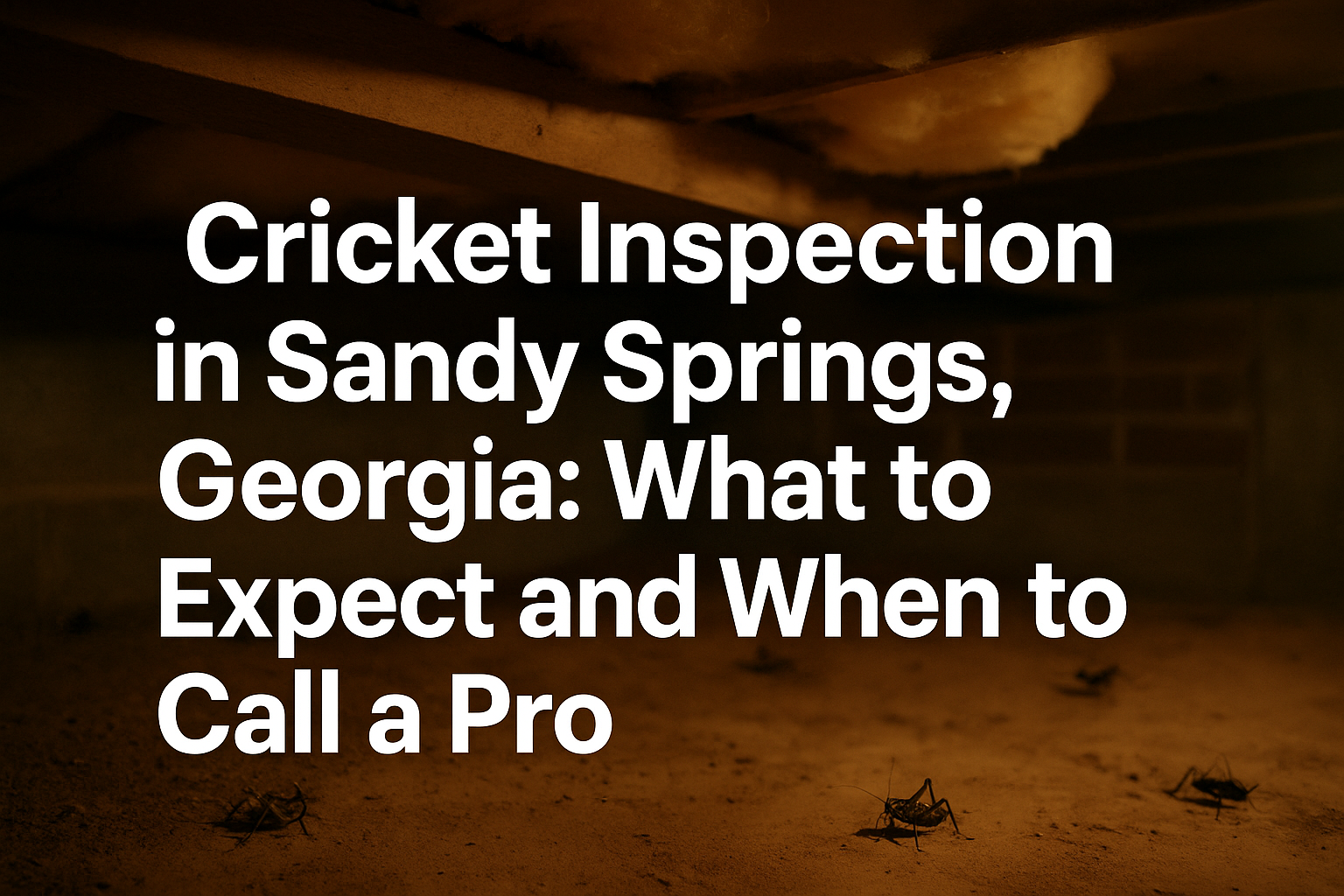Crickets Taking Over Your Sandy Springs Home?
Cricket control Sandy Springs is more important than ever, especially If you’ve heard that relentless chirping echoing through your house after sundown, you’re not imagining things—crickets are a real problem for many homeowners across Sandy Springs. Thanks to our muggy summers and mild winters, these noisy little invaders often find their way into basements, garages, and laundry rooms in neighborhoods like Riverside, North Springs, and the Dunwoody Panhandle. Once they’re in, it’s not just the sleepless nights you have to worry about. Crickets chew through clothes, cardboard, and even your favorite stored keepsakes. If left unchecked, their droppings can contribute to a less-than-healthy home environment, especially in damp, dark corners where they thrive.
So what’s the real cost of winning your home back from these pests in Sandy Springs? For a standard 3,000 square foot home, a one-time professional cricket treatment typically falls between $175 and $325, depending on the severity and area of infestation. Want ongoing peace of mind? Monthly or semi-monthly plans usually fall in the $40 to $60 per visit range. Many trusted local outfits (think Anthem Pest Control and neighbors just as invested in your community as you are) offer free inspections and custom plans, so you always know what you’re getting into before signing anything. No hidden surprises—just honest advice and transparent pricing.
This guide gives you a clear breakdown so you can take action. We’ll walk you through the latest treatment choices, explain costs for different cricket control needs, and offer simple prevention tips to keep these noisy squatters out for good. It’s time to get your quiet—and your home—back. Up next: see which solutions fit your needs and budget best!
What Impacts the Cost of Cricket Control in Sandy Springs?
If you’re looking cricket control Sandy Springs, you’ll notice the price can range quite a bit. Let’s talk through what actually drives those numbers up or down, so you know what to expect before you pick up the phone.
- Property Size Matters: The bigger your place, the more ground there is to cover—and that means more time, labor, and materials. Treating a big suburban home or a sprawling yard is always going to cost a bit more than servicing a smaller townhouse or condo.
- How Bad Is the Cricket Problem?: If you’ve just seen a cricket or two, you might be able to get away with a lighter, single treatment. But if they’re hopping everywhere, hiding in walls, or coming back no matter what you try, it gets more involved and usually takes several visits. More visits mean higher overall costs.
- One-Time vs. Ongoing Service: Single treatments for crickets in Sandy Springs usually run between $175 and $325, depending on the factors above. If pests are a regular headache—especially in areas near dense woods or lots of foliage like Spalding Woods or Mount Vernon Woods—you might want a quarterly contract, which typically costs $100 to $270 per visit. Monthly plans can be more budget-friendly, averaging $40 to $60 per month, and these are great if you’re looking to stay ahead of infestations before they start.
- Type of Treatment: Some pest control companies use eco-friendly options or products with lower toxicity. These solutions can sometimes nudge prices up a bit, but they’re worth it if you’re worried about pets, kids, or environmental impact.
- Recurring Pressure in Your Area: In neighborhoods with dense trees, mature shrubbery, or lots of damp, shady spots, cricket invasions can be a recurring issue throughout the warmer months. This constant pressure might mean more frequent treatments and, yes, a higher annual investment in pest control.
At the end of the day, every home—and every cricket scenario—is a little different. For the most accurate estimate, it’s a good idea to have a technician inspect your property and talk through your options. Companies such as Anthem Pest Control offer free inspections and custom quotes, so you’re not left guessing about costs. Transparency and clear pricing: that’s how you know you’re in good hands.
What Impacts the Cost of Cricket Control in Sandy Springs?
If you’re looking into cricket control Sandy Springs, you’ll notice the price can range quite a bit. Let’s talk through what actually drives those numbers up or down, so you know what to expect before you pick up the phone.
- Property Size Matters: The bigger your place, the more ground there is to cover—and that means more time, labor, and materials. Treating a big suburban home or a sprawling yard is always going to cost a bit more than servicing a smaller townhouse or condo.
- How Bad Is the Cricket Problem?: If you’ve just seen a cricket or two, you might be able to get away with a lighter, single treatment. But if they’re hopping everywhere, hiding in walls, or coming back no matter what you try, it gets more involved and usually takes several visits. More visits mean higher overall costs.
- One-Time vs. Ongoing Service: Single treatments for crickets in Sandy Springs usually run between $175 and $325, depending on the factors above. If pests are a regular headache—especially in areas near dense woods or lots of foliage like Spalding Woods or Mount Vernon Woods—you might want a quarterly contract, which typically costs $100 to $270 per visit. Monthly plans can be more budget-friendly, averaging $40 to $60 per month, and these are great if you’re looking to stay ahead of infestations before they start.
- Type of Treatment: Some pest control companies use eco-friendly options or products with lower toxicity. These solutions can sometimes nudge prices up a bit, but they’re worth it if you’re worried about pets, kids, or environmental impact.
- Recurring Pressure in Your Area: In neighborhoods with dense trees, mature shrubbery, or lots of damp, shady spots, cricket invasions can be a recurring issue throughout the warmer months. This constant pressure might mean more frequent treatments and, yes, a higher annual investment in pest control.
At the end of the day, every home—and every cricket scenario—is a little different. For the most accurate estimate, it’s a good idea to have a technician inspect your property and talk through your options. Companies such as Anthem Pest Control offer free inspections and custom quotes, so you’re not left guessing about costs. Transparency and clear pricing: that’s how you know you’re in good hands.
How Sandy Springs Homes and Environment Shape Your Cricket Problem
Every property in Sandy Springs comes with its own quirks and cricket challenges—something any local pest pro will tell you. Our climate gives these noisy pests every excuse to thrive. When the summer heat mixes with that signature Georgia humidity, cricket populations start booming. Once those frequent fall rains hit, crickets start looking for drier, cozier places. Guess what? That often means your home.
Homes in neighborhoods like Huntcliff, where older construction is common, tend to have more cracks, gaps, and foundation quirks—just the sort of welcome mats crickets love. Finished basements, crawlspaces, and untouched corners make great hiding spots, which means your pest control professional has a lot more ground to cover during inspections and treatments. The more entry points and nooks your house offers, the more time and effort it takes to track down the source—and that can mean higher costs.
Love a landscaped yard? Crickets do, too. Mulch beds, thick shrubbery, woodpiles, and even a cluttered garage can all provide shelter for these critters right up against your foundation. If your property backs up to the river, a lake, or a wooded patch, you’re dealing with even more pest pressure than your average city block. In these cases, basic treatment might not cut it—a local expert may recommend sealing entry points, clearing clutter, or even scheduling regular follow-ups to keep things under control.
Don’t forget your home’s build. Brick, stone, and wood exteriors may seem solid, but they often hide small gaps and weep holes that pests exploit. Older materials can shift and deteriorate, creating even more surprise access routes. Just finding all these entryways can turn a simple cricket job into a much more involved project.
So, whether your home is brand-new or has decades of history, where you live and how your house is built both play a major part in the cost and complexity of keeping crickets out. Wondering how all these factors stack up? Check out the visual below to see how it all connects right here in Sandy Springs.
Keeping Crickets (and Costs) Out of Your Sandy Springs Home
If you’re tired of crickets sneaking into your home and want to sidestep repeat pest control bills, it’s all about dialing in some practical habits right here in Sandy Springs. You don’t need fancy gadgets—just a little local know-how and attention to details.
- Seal up entry points: Start by walking the perimeter of your home. Check for small cracks and gaps around doors, windows, basement vents, and even the foundation. A bead of weatherproof caulk or some fresh weatherstripping makes a bigger difference than you’d think.
- Rethink your outdoor lights: Crickets love those bright porch or garage lights just as much as you do. If you can, use yellow bug bulbs—they attract fewer insects. Or, shut off unnecessary lights, especially during peak cricket season.
- Trim the jungle: Keep grass short and bushes trimmed back from your home’s base. Overgrown lawns and tall weeds invite crickets right up to your foundation, making it easy for them to wander in.
- Limit the hiding spots: Garages, basements, crawlspaces, and cluttered sheds are like five-star hotels for crickets. Make it a habit to declutter piles, store items in sealed tubs, and keep cardboard up off damp floors.
- Keep things dry: Crickets are moisture-lovers. If your home tends to get humid—especially here in Sandy Springs—think about using a dehumidifier in key areas like the basement or laundry room. Fix any leaking pipes or drips, too.
- Don’t skip inspections: Given how quickly cricket populations can boom in our area, it’s smart to schedule professional pest checks each spring and fall. Local pros have seen it all and can spot issues before they become pricey headaches.
By working these steps into your regular routine, you’re not just cutting down on crickets—you’re also helping your wallet by staying ahead of bigger problems. Next up, we’ll break down the best times of year to tackle prevention and make sure your home stays cricket-free, season after season.
Get Ahead of Crickets With Smart Seasonal Timing
If you’ve battled crickets in Sandy Springs, you know timing isn’t just a detail—it’s everything. Cricket problems aren’t a year-round hassle, but when they kick off, they hit hard. These noisy little invaders start ramping up in spring and only get bolder as the weather warms. By early summer, neighborhoods like North Springs and Riverside are buzzing with calls about chirping in basements, garages, and crawlspaces.
Here’s why acting early pays off: Crickets breed fast and love warmth and moisture. If you wait for late summer or fall, you’ll likely see (and hear) a full-blown infestation—and your options may cost more. On the other hand, booking a cricket service in late spring or early summer means smaller populations, easier treatment, and a higher chance of snagging a local deal or seasonal discount. Many local pros run spring specials to fill their schedules and kickstart protection before the real surge hits.
By the time fall rolls around, crickets start hunting for a cozy spot indoors. That’s when an inspection is just as important—catch stragglers before they settle in for the winter. Fall treatments can keep your basement or living room from becoming a cricket concert hall.
If you want flexibility, monthly or quarterly service plans can be a great fit. But no matter how you schedule it, calling at the first sign of chirping ensures you’re not paying to play catch-up later. Early action cuts down on both costs and those late-night cricket serenades.
- Book in late spring/early summer – Get ahead before populations boom, and look for seasonal promotions from local experts.
- Don’t skip fall inspections – Crickets love the warmth of your home as the temperature drops.
- Consider a contract – Monthly or quarterly plans mean fewer surprises and better value.
- Call early – Even just a few chirps can mean a bigger problem is brewing.
It all comes down to timing. Get ahead, save money, and keep your home peaceful. Next, check out a simple chart comparing when treatments work best throughout the year so you can plan like a pro.
Say Goodbye to Crickets—Get Your Free Quote Today!
If you’re tired of hearing crickets chirping all night or spotting them in your Sandy Springs home, let’s put a stop to it now. Anthem Pest Control makes it easy to take action with a free, no-strings-attached property assessment. We’ll check out your cricket problem, walk you through your options, and show you just how affordable trusted pest control can be.
Our team knows Sandy Springs homes inside and out, and we build every treatment plan with your peace of mind in mind. Ready for a quieter night and no more cricket surprises? Give us a call at 877-3718-5196 or visit our pricing page now to lock in your free quote. Fast, friendly service is only a call away—don’t let crickets take over your home one more night!
Getting Straight Answers About Cricket Control in Sandy Springs
We get it—nobody wants pests jumping around their home, and when you’re thinking about calling in the pros, you probably have a few questions. Let’s clear things up so you know what to expect when it comes to tackling crickets here in Sandy Springs, GA.
- How much will cricket control set me back?
Expect a one-time service to run anywhere from $175 to $325. If you’re leaning toward ongoing protection, monthly or quarterly visits usually cost between $40 and $270 per trip, all depending on the size of your place and how you set up your contract. - What’s included in a professional cricket service?
Most reputable teams will start with a top-to-bottom inspection, follow up with targeted treatments where crickets are causing trouble, offer tips on sealing up your home, and keep coming back if you want that kind of coverage. - Do I really get a free inspection?
Absolutely. Anthem Pest Control and most other pros in town will check out your property without charging a penny—no strings attached—then give you a quote so you can decide what’s best for you. - Are the products pet- and kid-friendly?
Yes, leading local companies like Anthem use solutions that focus on family and pet safety. The products are eco-friendly and have low toxicity, but if you ever have concerns, your technician can walk you through the details. - Should I go with a contract or just a one-time fix?
If crickets are a now-and-then issue, a single treatment might do the trick. But if your place is a magnet for bugs year after year, a contract plan can save you cash per visit and help keep your home consistently bug-free. - When should I schedule cricket control?
Spring and early summer are perfect for staying ahead of crickets before they become a problem, though you’ll see the most activity (and probably want service) in late summer into fall when they start making themselves at home indoors. - Where in Sandy Springs are crickets the worst?
Areas like Riverside, Huntcliff, and Spalding Woods—pretty much any neighborhood that’s wooded or close to the water—tend to have higher cricket populations. If you live in one of these spots, routine service can really make a difference. - How do I get a customized quote?
Your best bet is to reach out to Anthem Pest Control (or another trusted local provider) for a free inspection and a quote that’s tailored specifically to your property.
If you still have questions, don’t hesitate to reach out to your local pros. Taking the guesswork out of your cricket problem is what we do best—so you can kick back and enjoy your home without any chirping surprises.

